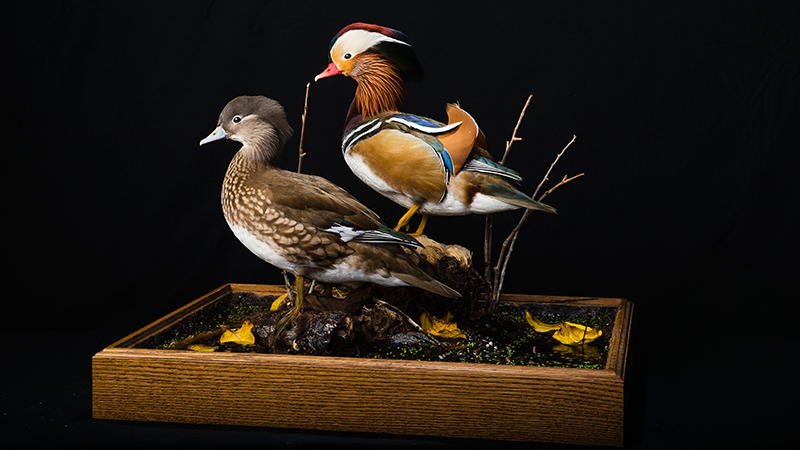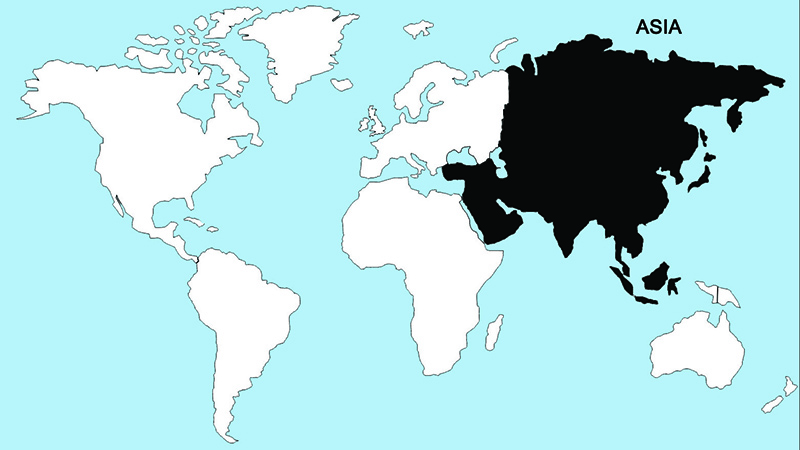Mandarin Duck

It is hard to imagine a more appropriate name for the mandarin duck; its image served as one of the badges of rank among the mandarins of imperial China. The Chinese and Japanese have held this duck in special esteem for thousands of years, and have used it as a symbol of happiness and marital fidelity. Appropriately, it is limited to the heart of the Orient in eastern China and Japan. Feral flocks have become locally established in Great Britain and northern Europe by aviculturists, and some feral birds may locally occur in California. The male in full plumage has a pair of remarkable "sail" feathers (modified tertials) that are held vertically above the back while swimming, ornamental narrow chestnut feathers that hang down from the cheeks, and a broad white eye-stripe that is bounded above and below by darker feathers and terminates in a long, shaggy crest. The female is demurely patterned in gray and olive tones, but like the male has bluish iridescent speculums on its secondaries, which are bounded behind with narrow black and white stripes. The male in non-breeding plumage closely resembles the female, but has a reddish bill.
Like American wood ducks, mandarins have beautiful courtship displays, which include exaggerated body- and head-shaking displays, neck-stretching while calling ("burping") and mock-drinking. The ornamental sail feathers are held upright, and are ceremonially preened during a mock-preening display that immediately follows mock-drinking. Males often display among themselves, in the absence of a female. Pair bonds often persist between breeding seasons, and males accompany their mates on nest-site searches among the trees. Their incubation and brood-rearing biology is almost identical to that of American wood ducks.
Regions Birds Are Found

Collection Location & Year
Mongolia 2001
Taxonomy
| Order | Anseriformes |
|---|---|
| Family | Anatidae |
| Tribe | Cairinini |
| Species | Aix |
| Genus | galericulata |
Gender
Female & Male
References
- Johnsgard, P. A. 1978. Ducks, Geese and Swans of the World. Lincoln, NE: Univ. of Nebraska Press.
- Elliot, A., J. del Hoyo, J. Sargatal, and C. Imboden, eds. 1992. Handbook of Birds of the World. Vol. 1 (Ostriches to Ducks). Barcelona, Spain: Lynx Editions.
- Kear, J. 2005. Ducks, Geese and Swans. London, UK: Oxford University Press.